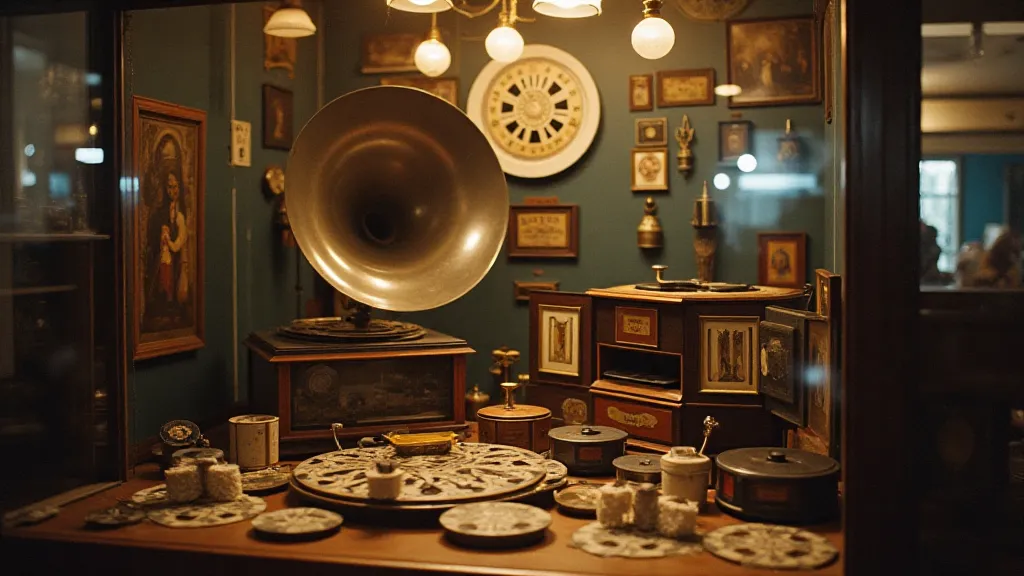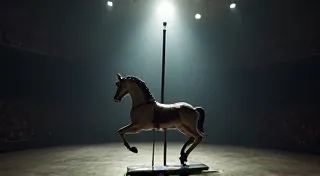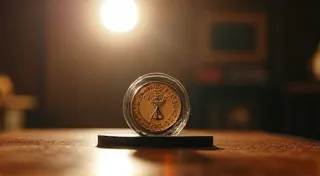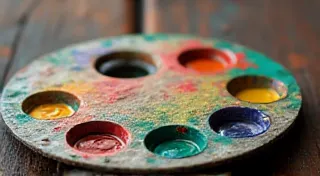Ephemeral Echoes: Aural Companions & the Lost Soundscapes of View-Master Experiences
The View-Master. For many, the name conjures a hazy memory: the cool, satisfying click of a reel changing, the slightly jerky advance of stereoscopic images, and the wonder of feeling transported to faraway places. We remember the vibrant pictures – exotic locales, movie sets, and natural wonders – but a crucial, often overlooked element of the early View-Master experience has faded with time: the accompanying audio. This wasn’t just about seeing; it was about *experiencing*. It was about recreating a lost soundscape.
My own earliest memory of a View-Master isn't just of the pyramids of Egypt, but of a slightly muffled voice narrating their history. It wasn't professional narration, mind you. It sounded like a kind, slightly flustered uncle attempting to entertain a group of children. The quality was rough, the pacing uneven, but the feeling – the sense of wonder coupled with a comforting, guiding presence – was deeply impactful. That's what made it more than just a visual toy; it transformed it into a miniature, immersive adventure.
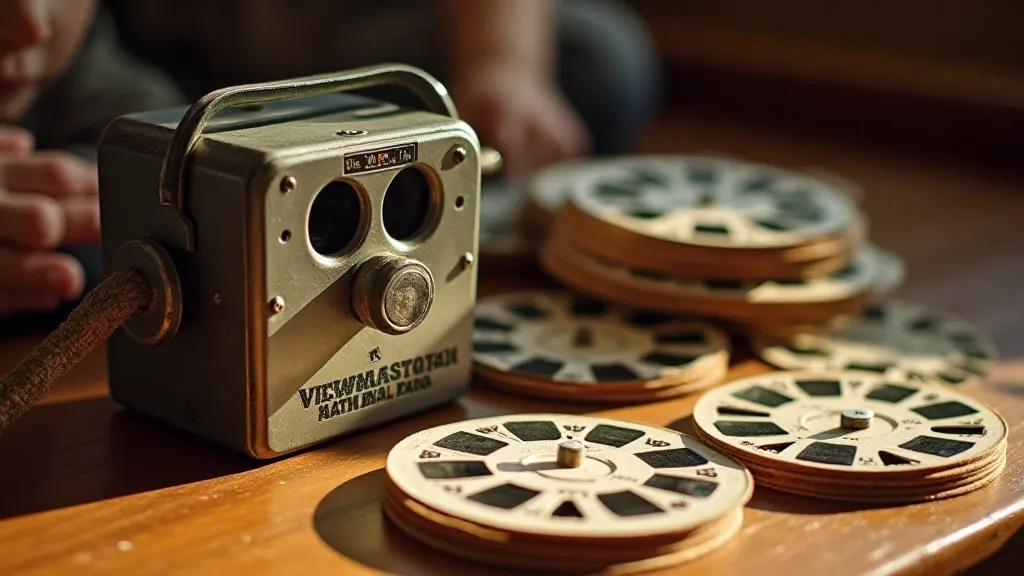
The Early Years: Sound & Storytelling Woven Together
The early View-Master sets, produced from the 1930s through the 1960s, frequently included an audio component. These weren't sophisticated recordings. They were typically synchronized narration or musical soundtracks played on a small, separate phonograph. Imagine the click of the reel changing, followed by the whir of the turntable, and then a voice filling the room, bringing the images to life. The initial View-Master models used a separate phonograph unit, sometimes a battery-operated one, to play the soundtracks. Later, integrated players were introduced, offering a more streamlined experience. This integration, however, wasn’t without its quirks. These early mechanisms were prone to wear and tear; the delicate gears and needles often broke or lost their effectiveness, leaving collectors and enthusiasts scrambling for replacement parts.
The narration itself varied considerably. Some sets featured purely descriptive accounts, meticulously detailing the sights and sounds depicted in the reels. Others included dramatic storytelling, complete with sound effects and character voices. These weren’t just recordings; they were carefully orchestrated experiences designed to captivate young imaginations. Consider the “Grand Tour” series, which transported children to European landmarks, or the Disney sets, which brought classic animated films to life in a whole new way. The ability to virtually explore the world through these reels became a powerful lure, offering journeys far beyond what most children could experience firsthand. Some collectors even describe how the narratives shaped their understanding of geography and different cultures, sparking a lifelong curiosity about the globe. It truly fostered a sense of wonder about the places showcased – a feeling of virtually being *there*.
The Cartography of Memory: Shaping Perspectives Through Narrative
The storytelling element wasn's merely an embellishment; it actively shaped the viewer's perception of the depicted locations. The narration would often highlight key historical events, cultural nuances, and geographical features. This meant that a child viewing the “Grand Tour” reels didn’t just see the Eiffel Tower; they learned about its construction, its significance to Paris, and the broader context of French culture. This blending of visual and auditory information deeply imprinted itself on young minds, creating lasting memories and a deeper appreciation for different parts of the world. To fully grasp the impact of these View-Master experiences, one needs to appreciate how they effectively acted as a kind of portable classroom, fostering a lifelong love of exploration and learning. For those particularly fascinated by the influence of these early View-Master sets on shaping cultural understanding, further insights can be found exploring the cartography of memory and how these seemingly simple devices helped map both the physical world and the developing minds of a generation.
The Craftsmanship: More Than Just Metal and Plastic
Examining these early View-Master audio units reveals a surprising level of craftsmanship. The phonographs, often made of Bakelite or other durable plastics, were built to last. The tiny needles, meticulously engineered to play the specially-made discs (which were often housed within the reel itself), represent a remarkable feat of miniature engineering. The simple elegance of the design speaks volumes about the dedication of the craftsmen involved.
This wasn’t mass production in the modern sense. These were objects made with an understanding of material and function. A damaged phonograph isn’t just a pile of broken parts; it's a testament to the time and skill that went into its creation. Restoring one – carefully cleaning the mechanism, replacing a worn needle – is a labor of love, a way of connecting with the past and preserving a piece of childhood wonder.
The Disappearance of the Soundscape
The shift away from audio components in the View-Master experience didn’t happen overnight. It was a gradual evolution, driven by cost considerations, technological advancements (the rise of television and other forms of entertainment), and changing consumer preferences. By the 1970s and 1980s, the integrated audio systems had largely disappeared. The focus shifted almost entirely to the visual element, relegating the original soundscape to a memory. This change in design choices also significantly altered the overall user experience. The shift towards purely visual reels meant a loss of the immersive quality that had defined the early View-Master experience for so long.
This loss is significant. It represents a diminishment of the immersive quality of the View-Master experience. Without the narration, the images, while still captivating, lack a vital layer of context and emotional resonance. The magic is lessened, the sense of adventure somewhat dulled. The focus moved from storytelling and discovery to simply presenting images, diminishing the educational and emotional impact.
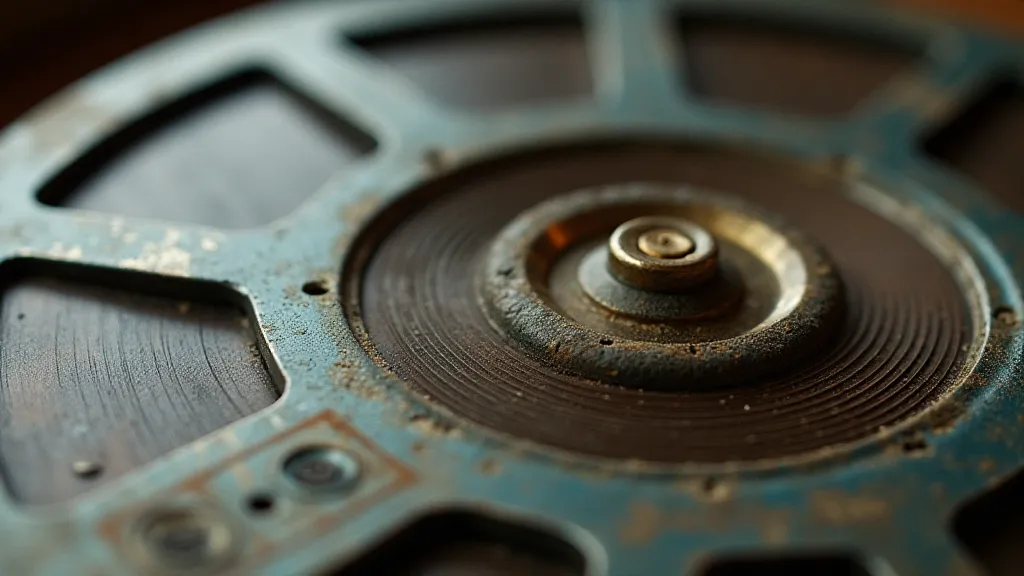
Valuing the Complete Package: A Collector’s Perspective
For collectors of vintage View-Master reels, the presence (or absence) of an audio component adds another layer of complexity and value. Complete sets – reels *and* the associated phonograph – are increasingly rare and command a premium price. Even if the phonograph isn't functional, its presence significantly enhances the historical significance and desirability of the reels. The interplay between the visual and auditory elements created a uniquely immersive experience, and collectors recognize the importance of preserving that complete package. Understanding the market forces at play and the nuances of vintage toy valuation is a fascinating endeavor in itself. Collectors dedicated to understanding these intricacies can learn more about defining value in the vintage View-Master market and gain deeper insights into what makes certain sets so highly sought after.
Preserving the Memory of a Lost World
The allure of the vintage View-Master extends far beyond the nostalgic appeal of old toys. It represents a tangible link to a time when imagination reigned supreme and the boundaries of entertainment were defined by creativity and ingenuity. The forgotten soundtracks are more than just recordings; they are echoes of a lost world – a world of wonder, adventure, and shared experiences. The dedication of preservationists and enthusiasts is vital to ensuring these experiences aren't entirely forgotten.
Efforts are underway to digitally preserve these forgotten soundscapes. Dedicated collectors and enthusiasts are painstakingly extracting the audio from the original discs, restoring them, and sharing them online. This ensures that future generations can experience the full, immersive magic of the early View-Master experience. The clicking of the reels, the whir of the turntable, and the comforting voice guiding you through a world of wonder – these are treasures worth preserving, reminders of a time when simple pleasures held the power to transport us to extraordinary places. The importance of understanding and appreciating these restoration efforts highlights the ongoing commitment to keeping these cultural artifacts alive for generations to come.
